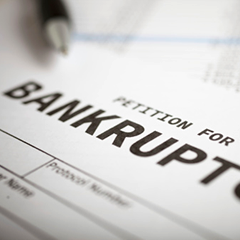Harsh Words From the Court For Underperforming Experts
March 3, 2014 | Court Rulings, Valuations
 In re Eastman Kodak Company, 2013 Bankr. LEXIS 3325 (Aug. 15, 2013)
In re Eastman Kodak Company, 2013 Bankr. LEXIS 3325 (Aug. 15, 2013)
Valuation experts who take on an engagement for which they lack the qualifications or the time risk a tongue-lashing in court, as a recent bankruptcy case demonstrates. This case highlights the importance of having a highly qualified valuation expert. For more on this, read our previous blog post How to Select a Business Valuation Expert.
Here’s the picture: When Eastman Kodak filed for Chapter 11 bankruptcy in January 2012, a group of shareholders requested the appointment of an equity committee, which the Bankruptcy Court (S.D.N.Y.) denied. As its bankruptcy moved along, Kodak gave up its dedicated capture devices business and sold its digital imaging patent portfolio for $527 million, much less than it had expected to collect. Also, in a settlement with its largest creditor, it sold the personalized imaging and document imaging businesses for $650 million. Its June 2013 disclosure statement set the company’s enterprise value at $498 million as of fall 2013 (the date of the reorganization plan). This valuation “was the result of hundreds of hours of work by recognized professionals,” one of its financial experts testified.
The shareholders claimed Kodak had underestimated its reorganization value by over $2 billion. They offered two expert reports that said there was significant undisclosed value in the company’s patent portfolio and in its brand. Kodak opposed the admission of these reports under Daubert. The first appraiser had graduated from law school less than five years previously and set up his own company to provide intellectual property (IP) services. He performed a discounted cash flow (DCF) analysis and said, in a three-page letter to the shareholders in June 2013, that he believed “the intrinsic value of Kodak’s U.S. patent portfolio to be $1.6 billion to $2.5 billion.” The analysis assumed that at that time Kodak had slightly more than 8,500 U.S. patents in force, with an average remaining term of 8.177 years. Based on a January 2012 lender presentation and on licensing figures from recent years, he concluded the annual patent revenue was in a range of $250 million to $350 million.
A Kodak expert countered by saying that the company’s recent settlement reduced the number of worldwide active patents to 7,000 and active U.S. patents to 4,400. Moreover, Kodak had granted licenses to “virtually all” of the retained patents to a consortium that participated in the sale of the digital imaging patent assets. It needed to hold on to any unlicensed patents for its core business following reorganization. The most recent public financial statements projected 2013 IP revenue of only $35 million. The shareholders’ expert had not reviewed the most recent financial information but said he was aware of the 2013 asset sales.
Not a Kodak moment: The court bristled at this testimony. “Whatever the strength of his background, he spent only five hours and his firm spent a total of ten hours on valuing Kodak’s patents,” it said, highlighting his contradictory attitude. Although he admitted that his firm would need 5,000 hours to do a full analysis of the value of the patent portfolio, he “did not take the position that he could not provide any opinion testimony until such analysis had been performed.” Based on assumptions “that have no validity whatsoever,” the testimony was not “useful or admissible” as to current value. The brand expert’s analysis didn’t fare much better with the court.
